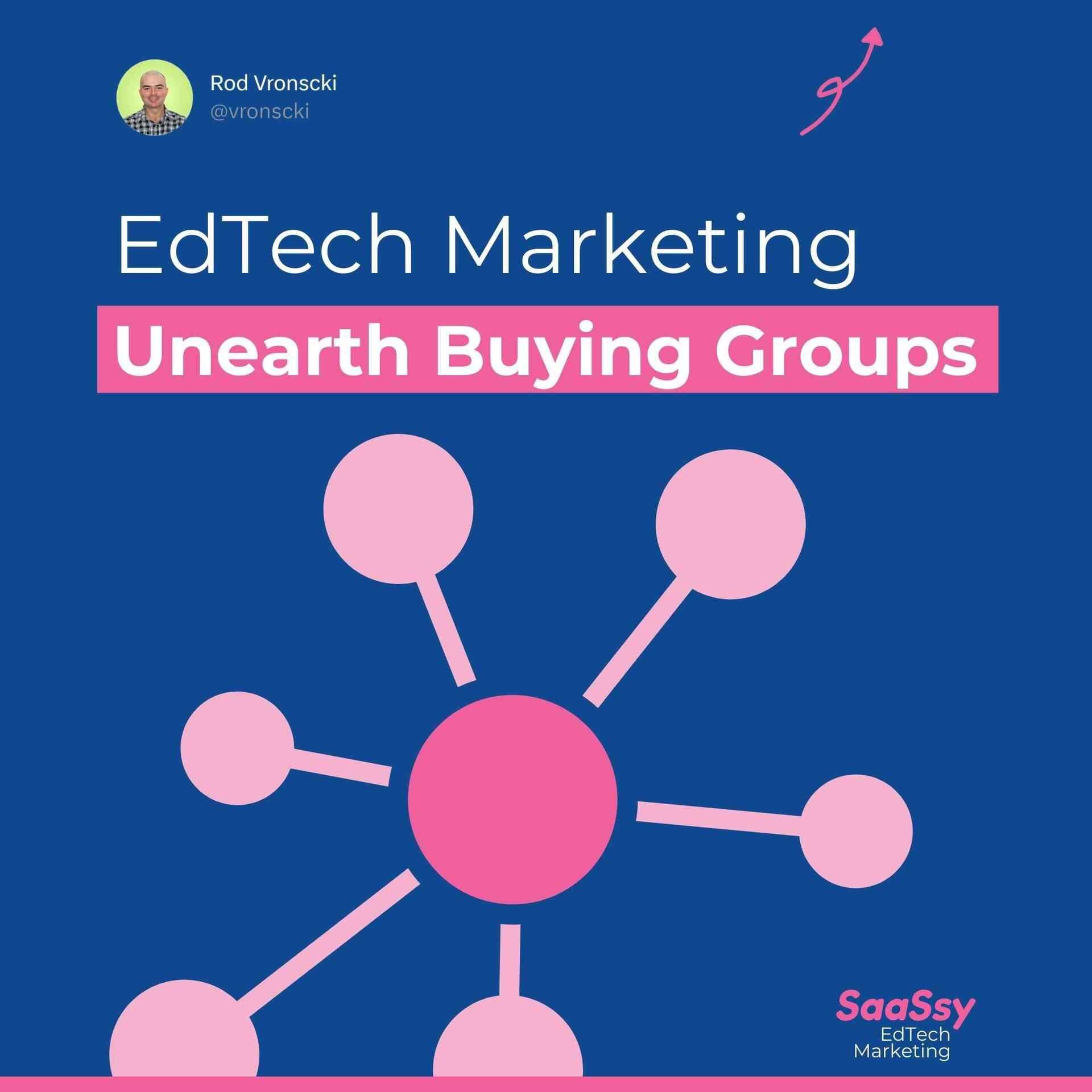- AmplifyED
- Posts
- EdTech Marketing: Unearthing Buying Groups
EdTech Marketing: Unearthing Buying Groups
There's a silent pipeline killer in #EdTech. You think you know it, but you don't

Many EdTechs find themselves in a conundrum, knowing they need to reach more institutions, but keeping their sales reps in a reactive mode (see last post).
That’s the sales part of the problem - but it compounds on the marketing part of the problem:
👉 Being happy with one lead per institution
One lead does not equate to having the job done.
Today’s buying process has become complex and needs to address buying committees in more depth.
Buying committees need to:
Know about you
Know what you offer
Understand the problem you solve
Trust you
Make sure you’ll integrate with their current tech
Have all stakeholders’ interests matched by your solution
Bring you into the final selection
Have the funds to buy from you - or guidance to get them
Go through the procurement process
Go through the implementation process
Come out happy with the decision on the other side
Both Marketing and Sales need to understand how painstaking and difficult a decision like this is.
And, at any point, if one of those needs is not met, someone in the buying group can pull the plug on the process.
Not deeply addressing buying groups will cause:
Marketing to see campaigns booming;
Sales to see “bad”, no decision-making leads.
These are not bad leads, they are part of the process - and both Sales and Marketing need to understand their jobs in the modern buying journey:
Marketing needs to unearth stakeholders;
Sales needs to create relationships with them and explore the opportunity.
The truth is that few EdTechs do this.
But they are so close to the Marketing part of the solution, still so far:
ACCOUNT SCORING
To understand how well your campaigns are working, leads are not the only measurement:
You need to find out how many times institutions have responded to your ads.
You need to understand which institutions are warm to your message - regardless of form fills.
Once you see that these institutions are crossing a threshold of visits and interaction with your landing pages, that would mean that, at least, some people are aware of your solution.
Those visits show intent - even if early intent.
The greatest advantage of early intent is: competitors are likely not there yet - and your reps are free to explore and steer the opportunity.
Once you’ve identified institutions, you will take action:
Retarget the key roles within the institutions to bring them to the same awareness level;
Use thought-leadership assets to create trust and consideration, and entice form fills;
Contextualize accounts and contacts for your sales reps;
If you had one or more form-fills, that’s the starting point for your sales reps;
If you hadn’t, then you’ll source the key people - likely to be in the buying group - so your SDRs can start exploring.
This is all part of the Inbound-Led Outbound Strategy.
I-LO connects marketing signals with sales action - enabling your sales team to start warm, relevant conversations and steer purchases.
You will compound demand generation and outbound sales.
Turn early intent into real pipeline in under 90 days
Align Sales and Marketing around warm, relevant signals
Use content, clicks, downloads, and ad engagement to trigger outreach
I wrote an entire guide to help you understand, sell it internally, and implement the strategy.
Download the Strategy Guide
Hi, I’m Rod 👋
I share marketing and sales strategies for EdTech leaders.
Scale your pipeline and drive more demos and trials - no extra hires.
Reply to this email to start a conversation.